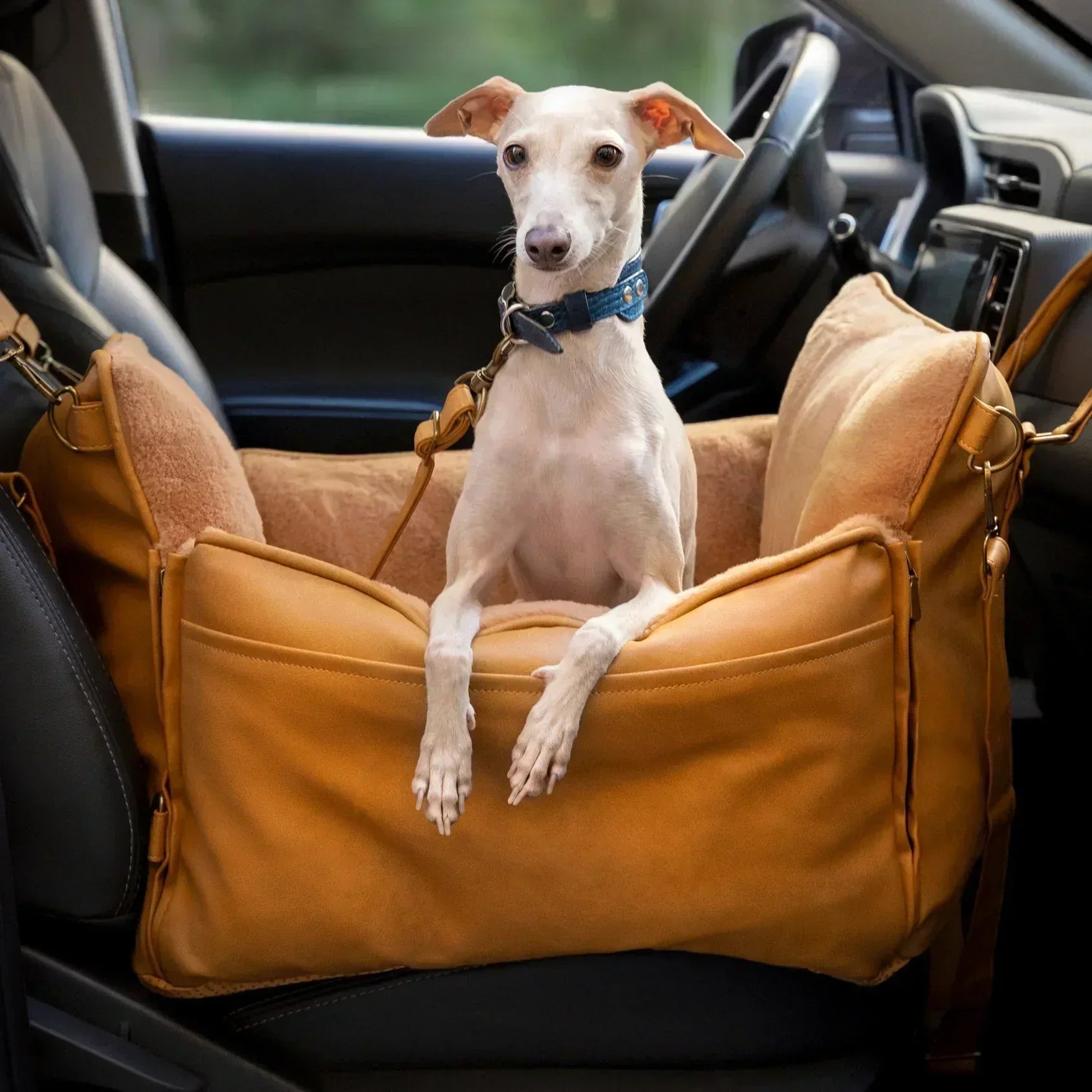
Most people spend a significant amount of time in the car (an average of one hour per day, according to AAA! ), so it isn’t always easy to remember that car rides can be a new and scary experience for our pets. Whether they’re accompanying you on a road trip or just a trip to the vet, it’s important to consider how to safely transport your pet and make it a pleasant experience for all involved. As a small animal vet, here are my top five tips on car safety for pets.
Secure your pet in a crate or car seat
Pets must be safely restrained while driving, in the back seat or rear of the car. Options include a crate, carrier, crash-tested safety harness, or pet car seat. This is for your pet’s safety, as well as the protection of the driver, passengers, and other vehicles. Unrestrained pets (especially cats) can crawl under the driver’s feet, hindering their ability to use the gas and brake pedals. Additionally, both dogs and cats can cause a distraction, interfere with safety equipment such as airbags, or be thrown from the car during a collision.
Never leave a pet unattended in the car
Even on cooler days or with a window cracked, temperatures in a parked car can change rapidly. Leaving your pet unattended in a parked car can lead to life-threatening hyperthermia (heat stroke). According to the American Veterinary Medical Association , research shows that the temperature inside a car can increase by about 20°F in just 10 minutes, and climb over 40°F higher than the outside temperature within an hour. On a 70°F day, the interior can quickly surpass a deadly 110°F. Early signs of heatstroke include excessive panting, drooling, dehydration, disorientation, weakness, vomiting, and diarrhea. Cold weather can also pose a threat, so it’s best to always take your pet with you when you leave the car, or leave them safely at home.
Desensitize anxious pets to riding in the car
Fear or stress related to riding in the car can lead to panting, drooling, whining, trembling, restlessness, vocalization, urination, defecation, or refusal to get in the car. More subtle signs of anxiety may include stiff body posture, whale eye, yawning, and lip licking. Car anxiety can stem from various causes, including motion sickness, negative experiences linked to the car, a lack of positive early exposure, or sensitivity to the movement and noise associated with car travel.
The most effective way to address car anxiety is through a process called desensitization and counter-conditioning, which aims to gradually change a pet’s fearful emotional response to the car into a positive one. This involves slowly exposing them to the car and elements of travel (approaching the parked car, getting inside with the engine off, then briefly on, very short drives, etc.), always staying below the level that triggers their anxiety while pairing each step with high-value rewards like a favorite treat. If you only drive your dog to the vet, be sure to add in car rides to fun places, such as the park, or stop by your vet for a few treats. You can also try distracting them with a puzzle feeder, lick mat, or frozen Kong during the ride. Pets with more severe anxiety may need calming supplements, pheromone spray, or anti-anxiety medication to travel comfortably.
Car sick? Discuss options with your vet
Just like people, some animals can experience motion sickness, which can make car rides unpleasant for all involved. This is especially common in younger dogs. Symptoms may include restlessness, drooling, vocalization, lip licking, vomiting, or diarrhea. Talk to your veterinarian about ways to help prevent motion sickness, such as withholding food prior to travel and prescription anti-nausea medications, such as Cerenia.
Stock up on essentials
If you travel frequently with your pet, it’s a good idea to keep some essential supplies on hand. This includes extra poop bags, leash, treats, old towel, favorite toys, cozy blanket, and collapsible water bowl. For longer trips, you will also need food, medications, a litter box, a pet first aid kit, and a health certificate from your vet if crossing state lines. Do your research ahead of time to familiarize yourself with pet-friendly activities and the location of nearby emergency vet clinics.


